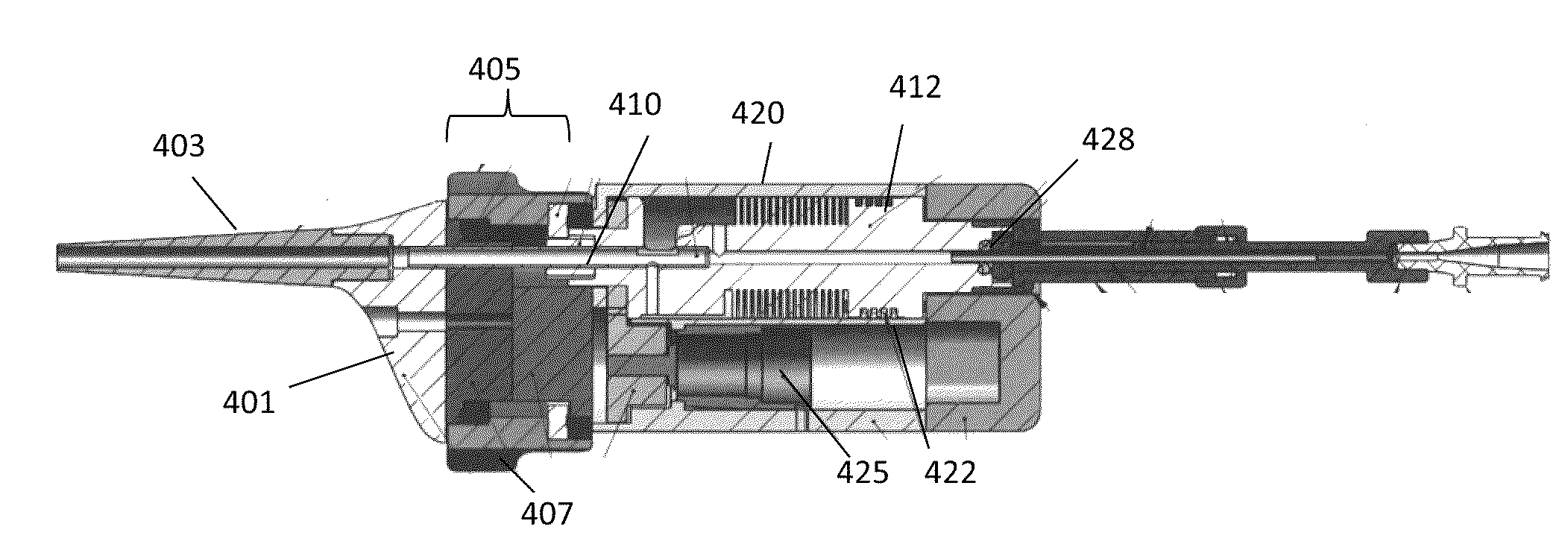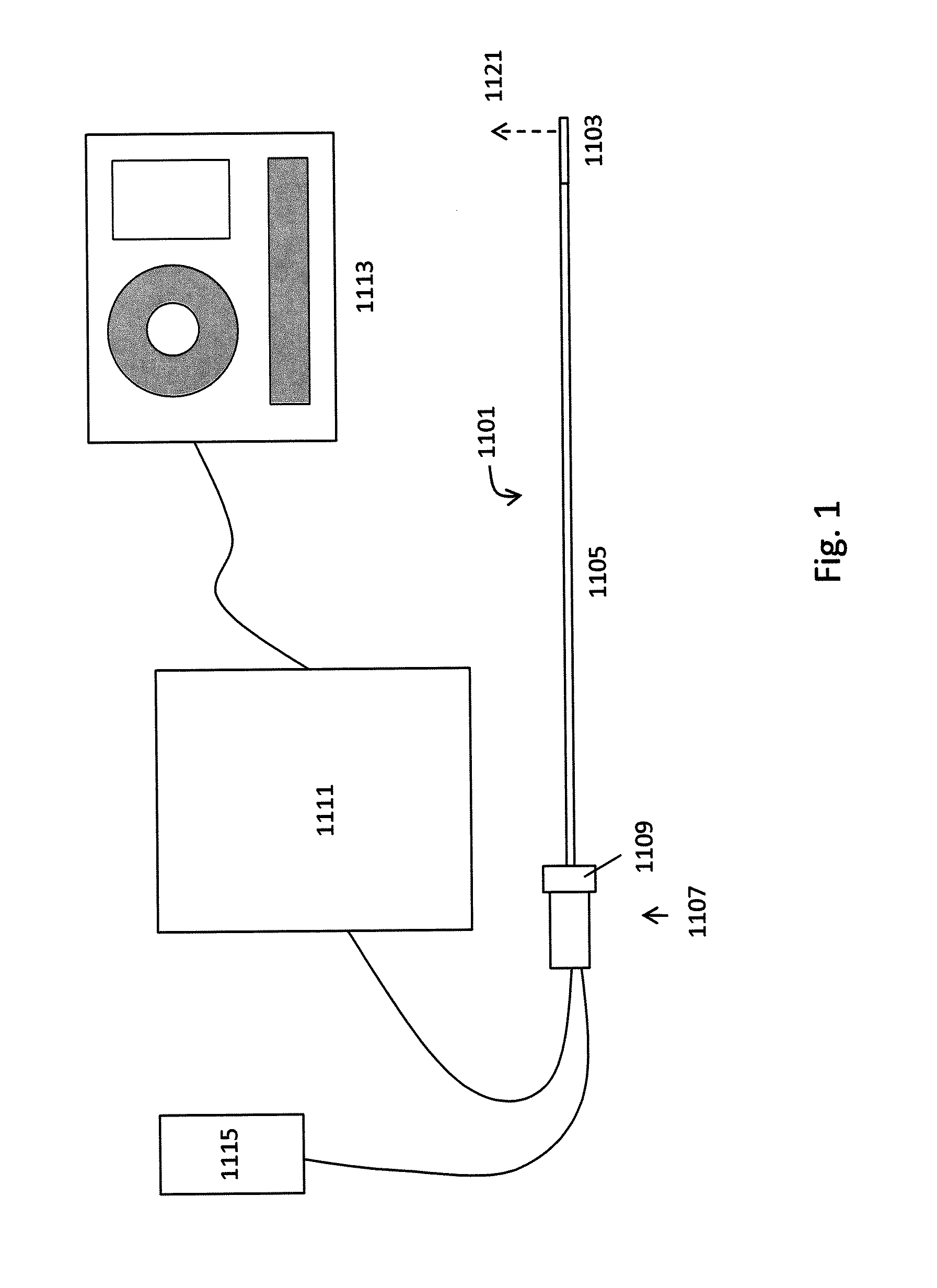Catheter-based off-axis optical coherence tomography imaging system
- Summary
- Abstract
- Description
- Claims
- Application Information
AI Technical Summary
Benefits of technology
Problems solved by technology
Method used
Image
Examples
Embodiment Construction
[0073]Described herein are OCT catheters and imaging systems using them, including methods for using them to image. In general, an OCT catheter as described herein is a flexible elongate catheter that includes an optical fiber for OCT imaging that extends the length of the catheter. The pathway taken by the optical fiber is displaced from the central longitudinal (proximal-distal) axis of the catheter, and thus may be referred to as off-axis. The catheter body is typically rotationally coupled to a handle portion so that the catheter body and the optical fiber rotate together relative to the handle.
OCT Catheters Having Off-Axis Optical Fibers
[0074]FIG. 1 illustrates one variation of an OCT catheter having an off-axis optical fiber that may form part of an OCT imaging system configured as described herein. In this example, the device includes a catheter 1101 having a distal end 1103 that includes a one-dimensional OCT sensor (typically configured as a common-path interferometry devic...
PUM
 Login to View More
Login to View More Abstract
Description
Claims
Application Information
 Login to View More
Login to View More - R&D
- Intellectual Property
- Life Sciences
- Materials
- Tech Scout
- Unparalleled Data Quality
- Higher Quality Content
- 60% Fewer Hallucinations
Browse by: Latest US Patents, China's latest patents, Technical Efficacy Thesaurus, Application Domain, Technology Topic, Popular Technical Reports.
© 2025 PatSnap. All rights reserved.Legal|Privacy policy|Modern Slavery Act Transparency Statement|Sitemap|About US| Contact US: help@patsnap.com



